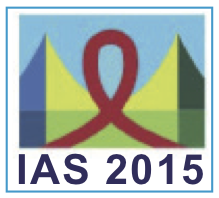Rapid implementation of the 2013 WHO ART guidelines
1 August 2015. Related: Conference reports, Antiretrovirals, Guidelines, IAS 8th Vancouver 2015.

Polly Clayden, HIV i-Base
World Health Organization (WHO) included over 50 new recommendations for HIV treatment and care in the 2013 Consolidated Antiretroviral Guidelines. WHO also supported countries to adopt the new policies faster than in previous years.
Meg Doherty from the WHO HIV department showed findings from an analysis of country adoption and uptake of the 2013 recommendations at IAS 2015.
Dr Doherty stressed that progress towards the ending the AIDS epidemic by 2030 depends on the adoption and implementation of global guidelines with evidenced based approaches to treating people with HIV. The 2013 guidelines included new recommendations on clinical, operational, programmatic and M&E aspects of HIV treatment and care.
Following the launch of the guidelines in July 2013, between August 2013 and May 2014, WHO with partners conducted nine dissemination meetings in six regions for over 100 countries. Since that time WHO has established a database to monitor countries’ progress in adapting and implementing its recommendations.
WHO used baseline surveys from the dissemination meetings, annual e-surveys with national Ministries of Health programme managers, peer reviewed literature, national strategic plans and concept notes to the Global Fund, to analyse the extent to which the 2013 recommendations had been adopted and implemented.
Results were compared to Global AIDS Response Progress Reporting. Any discrepancies were verified at country level with programme managers.
The evaluation looked at barriers to implementation using an esurvey conducted with programme managers, between May and June 2015 before WHO began the 2015 guidelines.
Dr Doherty presented data from 144 low- and middle-income (LMIC) countries and 58 WHO focus LMIC (with the highest burden of HIV) to the end of 2014. She showed data on both the adoption of recommendations as policy and the implementation.
For starting ART in adults and adolescents at a CD4 threshold of <500 cells/mm3, the survey showed 53% of 144 LMIC had adopted this recommendation, and 6% treat all (including Brazil, Thailand and Yemen). Of 104 countries that reported on uptake, 52% reported countrywide implementation of this policy recommendation.
PMTCT recommendations have been adopted and implemented fairly rapidly. Across 144 countries, 95% reported the recommendation of Option B+ or B. Implementation varied: 65% of 94 responding countries reported full countrywide implementation of B+.
WHO paediatric policies (treating all infants and children < 5 years of age) were adopted in 40% of 144 countries, and 3% treat all children (including Uganda and Ethiopia). Implementation of paediatric policies also varied: 81% of 99 countries reported full countrywide implementation.
The recommendation to treat positive partners of HIV negative people was adopted in 65% of 144 countries – several countries are not reporting on this policy.
Adoption of the WHO preferred first-line regimen of efavirenz (EFV) plus TDF plus XTC (3TC or FTC) was high: 80% of 144 countries. Dr Doherty highlighted problems in Eastern Europe where multiple regimens are recommended – not always including the WHO preferred first-line.
Routine viral load monitoring was adopted in 63% of 144 countries. WHO are evaluating implementation data for routine viral load monitoring; this is expected to be quite a bit lower than that for adoption of the recommendation.
Option B+ and B have been taken up by nearly 100% of the 58 WHO focus countries as has the preferred first-line regimen. Treating people with CD4 <500 cells/mm3 was more variable and treating all has “crept into the data” more recently.
WHO also monitors adoption and uptake of service delivery recommendation in the 58 focus countries. Integrating TB treatment into the ART programme has been taken up fairly well for adults and children but other recommendations (ART provision in TB, mother/child heath, and opiate substitution therapy settings, and engaging community health workers in patient support) have not been taken up widely. The poorest implementation is of ART in opiate substitution therapy settings – this was reported in less than 15% of 58 countries.
Dr Doherty summarised the results for the 58 WHO focus countries 18 months after launching the 2013 guidelines:
- 100% adopted at least one major recommendation.
- 60% adopted a policy of starting treatment at CD4 < 500 cells/mm3.
- 93% adopted EFV/TDF/XTC as preferred first-line.
- 60 to 90% were implementing integration of services (mainly TB).
“Full implementation of these recommendations will lay the foundation to achieving the 90-90-90 target”, she said.
Comment
WHO is working on an evaluation of time to (and barriers to) implementation of the 2013 consolidated guidelines. This will be important to inform the uptake of the new 2015 recommendations.
To support uptake of the 2013 recommendations, a survey among programme managers indicated the need for: greater preparation of health services, increased domestic investment and donor support and training of more health workers.
Reference:
Doherty M et al. Rapid uptake and adoption of the WHO 2013 Consolidated ARV guideline recommendations: paving the way to achieving the 90/90/90 global target. 8th IAS Conference on HIV Pathogenesis, Treatment & Prevention.19-22 July 2015. Vancouver, BC, Canada. Oral abstract MOAD0101. Webcast:

